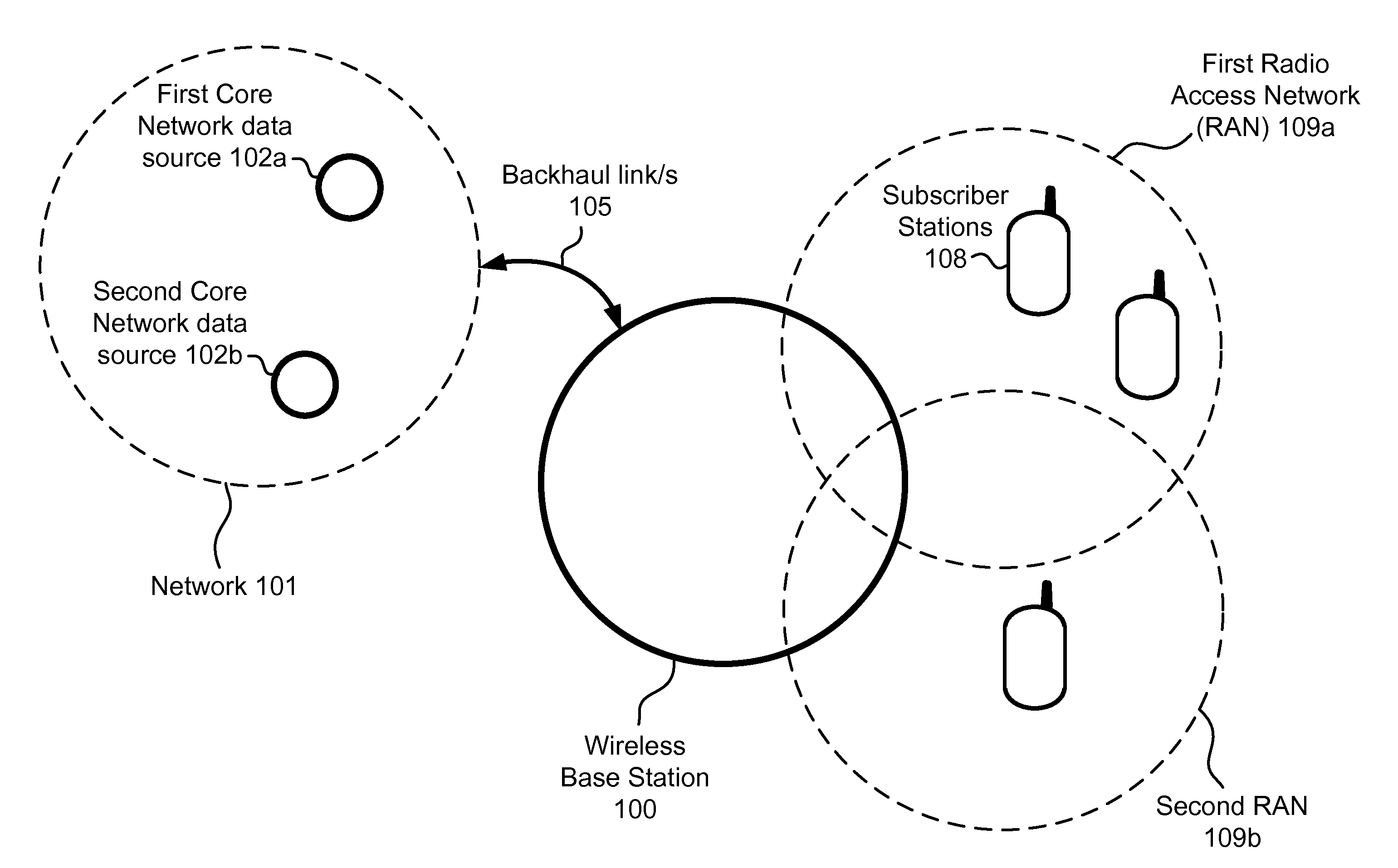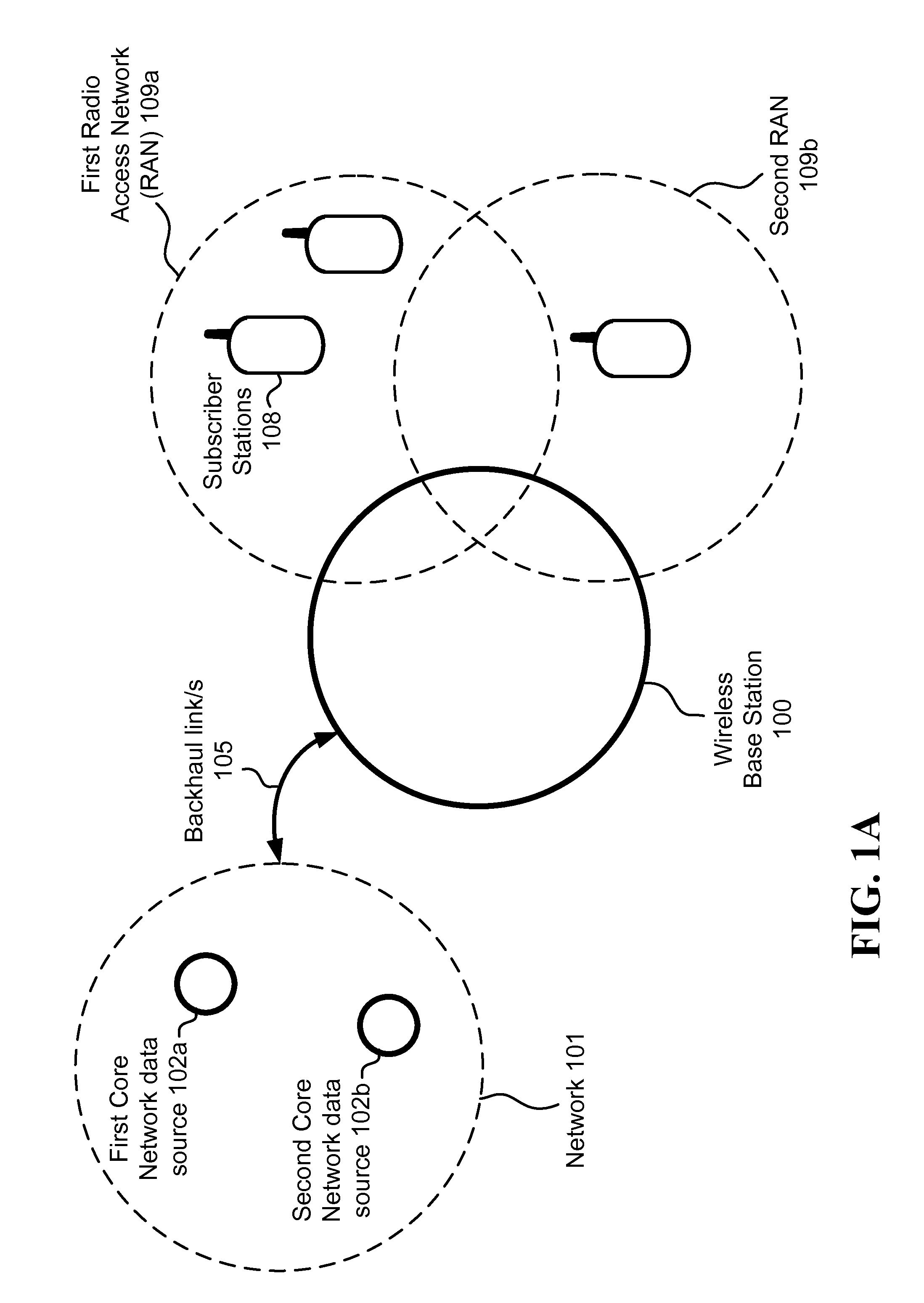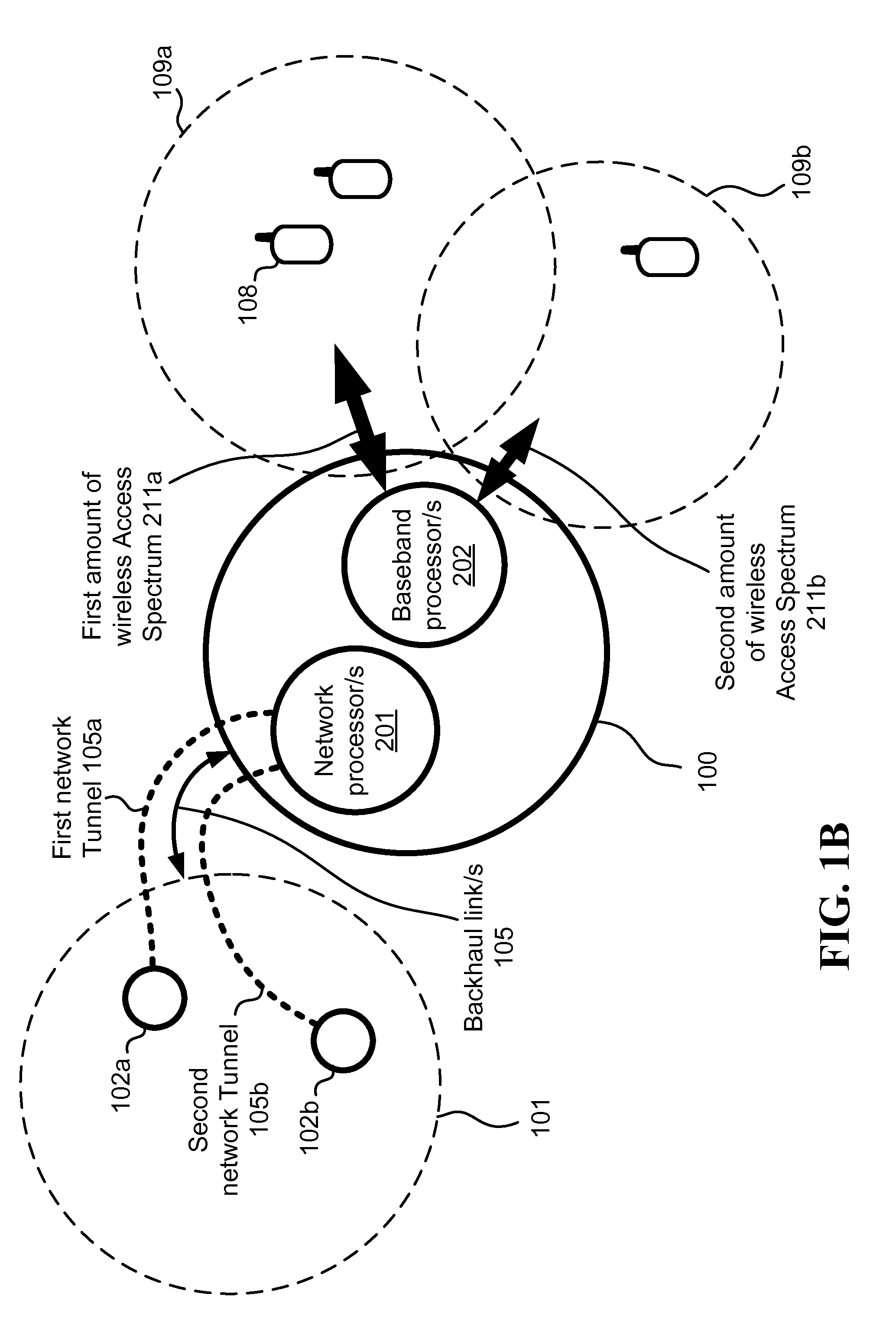Multi-band wireless cellular system and method
- Summary
- Abstract
- Description
- Claims
- Application Information
AI Technical Summary
Benefits of technology
Problems solved by technology
Method used
Image
Examples
Embodiment Construction
[0070]A number of terms are used in the presentation of embodiments, among which are the following:
[0071]An “Analog-Digital Interface”, also called a “Two-Way Analog-Digital Interface”, is a converter between two components of a system that converts analog signals to digital signals, or digital signals to analog signals, depending on the need. One example of an Analog-Digital Interface is an interface between a Baseband subsystem and radio transceiver chain. Each of the components listed may have additional sub-components, some of which are listed in the embodiments described herein. Different configurations of the components are described in some of the embodiments. Different communication paths and processes between components are described in some of the embodiments. The components, sub-components, configurations, and communication paths and processes, presented herein, are intended to present only some of the embodiments, and are illustrative only.
[0072]“Associated with” describ...
PUM
 Login to View More
Login to View More Abstract
Description
Claims
Application Information
 Login to View More
Login to View More - R&D
- Intellectual Property
- Life Sciences
- Materials
- Tech Scout
- Unparalleled Data Quality
- Higher Quality Content
- 60% Fewer Hallucinations
Browse by: Latest US Patents, China's latest patents, Technical Efficacy Thesaurus, Application Domain, Technology Topic, Popular Technical Reports.
© 2025 PatSnap. All rights reserved.Legal|Privacy policy|Modern Slavery Act Transparency Statement|Sitemap|About US| Contact US: help@patsnap.com



